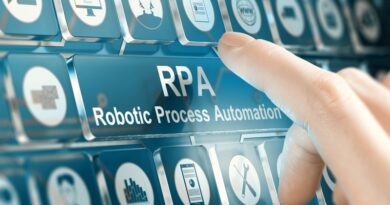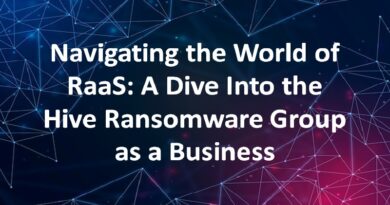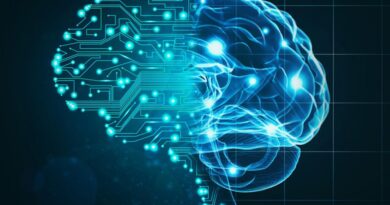How AI is shaping the future of work
Talent management’s many demanding situations in maintaining personnel engaged assist in outline the destiny of work. Every employer is suffering to satisfy its desire for professionals who convey new skills, made harder via of excessive attrition fees and an aggressive activity market.
Chief human resources officers (CHROs) and the organizations they lead are looking to build the expertise they need by upskilling talent. Add to those challenges getting internal mobility right, providing employees with learning and growth opportunities, coaching managers to be talent champions, achieving less bias in hiring decisions and the future of work’s growing challenges become clear.
A data-driven approach to solving these challenges using AI delivers results, as the interviews and presentations at the Eightfold Cultivate 22 Summit showed.
An enterprise with deep understanding in AI has released a brand-new initiative known as Laddrr, a aid hub for making plans and handling each youngsters and thriving careers. Laddrr`s aim is to assist 10 million mothers throughout the globe can climb better of their occupations. This social effect initiative is the brainchild of Ashutosh Garg, cofounder CEO of Eightfold AI and Kirthiga Reddy the president of Athena SPAC.
Where AI is delivering talent advantage
Eightfold’s Cultivate ’22 Talent Summit took on the ambitious vision of exploring the future of work, why having a talent-based competitive advantage is essential and how AI can help solve the most challenging talent intelligence problems.
During his keynote, “the new frontier for leading organizations is building a talent advantage. candidates and employees are joining and staying at the organizations that support their ongoing growth. Upskilling is a continuous process and having access to a platform that develops every individual effectively is invaluable today and essential for the future.”
Four statistics underscore why upskilling is a core element of future work. First, the average person has changes jobs 12 times in their lifetime, and 89% of people switch careers. Second, the average tenure in a current role is 5.9 years and the average tenure in a current career is 8.2 years. Third, multiple careers are normal, accelerating and one of the primary catalysts changing the nature of work. Finally, as career changes increase, talent management needs to stay true to the vision of enabling every employee to realize their full potential.
enterprises are building on the foundation of the Eightfold Talent Intelligence Platform with Talent Upskilling, which is enabling enterprises to meet talent needs by developing their network (employees, candidates, and contingent workers), using AI to understand talent gaps and providing an AI-generated personalized development plan for every employee. What’s specific to the Eightfold Talent Intelligence Platform is its data-driven approach to solving complex talent management challenges. As a result, it’s in use today across a broad spectrum of enterprises, including BNY Mellon, Prudential, Vodafone, and many others.
AI transforms HR systems into talent intelligence platforms
Josh Bersin’s keynote further explained the connection between AI and the future of work and how AI is revolutionizing human resource management (HRM)systems. Bersin is a global industry analyst and CEO at The Josh Bersin Company. He’s considered a leading expert on HRM, talent management technologies and the role of AI in talent intelligence.
“Disruption, reinvention, upskilling and redeployment of people is going to become the most important asset you have.” Finding new ways to improve upskilling and internal mobility, remove biases in the hiring and retention process and provide employees with a roadmap of what’s next in their careers is core to the future of work.
“If you look at virtually any HR software company, whether it be an applicant tracking system, a human capital management system, a payroll system, whatever most of the engineering is in the software, it’s the transactional applications, the workflows, the user experience, business rules, in that software.” HR systems are transitioning from transaction platforms to data platforms, with decisions driven by AI. Workday, SAP SuccessFactors, Oracle Fusion Cloud HCM, ADP Workforce Now and others are the leading cloud-based Human Capital Management (HCM) companies today.
data platforms have intelligence that learns over time and can compare, benchmark, and improve. “Eightfold is really a data company. And if you want to get intelligence, information about skills or job roles, or careers, or candidates and their fit to your different jobs, you really need a lot of data. That’s a whole different business.”
Where enterprises are getting value from AI
Two of the most interesting sessions were on internal mobility and growing talent champions. The sessions on internal mobility featured Marc Starfield, group head of HR programmes and systems at Vodafone and Vicki Walia, Ph.D. of Prudential Financial. The session on growing talent champions featured Walia’s insights. The following are key insights from the sessions:
- Prudential and Vodafone use the insights gained from an AI-based platform to coach managers to improve how they champion talent. For example, Prudential Financial found that managers who use data derived from AI-based analysis achieve a 1.5X to 2X jump in their teams’ revenue performance compared to those who don’t.
- Prudential Financial identifies capabilities it needs to support strategic plans, relying on AI to help define upskilling and reskilling strategies. For example, the internal mobility panel audience how her company goes through a strategic planning process that includes defining the capabilities they need, and which are the ones that we’re going to build, buy and partner to get. That decision-making process led the company to consider an AI-based talent intelligence platform. “We found Eightfold. We recognized early on that we wanted to go on a path of upskilling and reskilling, but we knew there was going to be a capability we’d never be able to build for ourselves. So, we went out to go find a partner to help us do that.”
- Internal mobility has improved from 30% three years ago to over 50% today at Prudential. That when the company began its program three years ago, internal mobility rates were about 30%. Today, she says they’re at about 54% and 56%. “Something like 48% of all of our employees globally have had a new opportunity.”
- Trusted data shared to create transparency delivers solid results, especially in changing hiring patterns. Starfield of Vodafone says that his company sees first-hand how powerful it is to share data across the organization. “So, one of the things that we wanted to achieve with Eightfold was having a more diverse group of people apply. “In the five months we’ve been live, we have 144% more women than the previous year being hired.” The platform provides accurate matches of capabilities to needed skills, leading to more women being hired for key roles. Walia added that at the end of two years, her company went back and looked at accessibility and transparency, we would lead to more diverse pipelines. “Our most diverse users are black women from the age of 39 to 49. They’re the greatest users of the platform and they are the most satisfied users of our platform.”
Done right, AI can change lives for the better
The potential AI has to remove biases and give women worldwide the opportunity to make the most of their talents and change the direction of their and their families’ lives is encouraging. In addition, leading enterprise and search companies use the Talent Intelligence platform to find new candidates with the specific capabilities, skills and strengths needed to excel in highly technical roles.
Masking for bias, the leading candidates are often women with master’s and Ph.D. degrees in AI, computer science, machine learning and mathematics attending universities worldwide. Getting hired for a senior technical role in an enterprise software company changes the growth trajectory of their careers, elevating an entire family economically at the same time.
Sessions at Cultivate ’22 explored current and proposed AI legislation and ongoing efforts to bring greater transparency and reduce bias in AI-based talent management platforms. Panelists agreed that several legislative initiatives, including the Workplace Technology Accountability Act or Assembly Bill 1651, limiting monitoring technologies to only job-related use cases and protecting workers’ rights to their data, are needed in the industry.
Despite Assembly Bill 1651 and the New York City Council passing Int. 1894-2020A to regulate employers’ use of automated employment decision tools to curb bias in hiring and promotions, the U.S. lags behind the world in auditing how algorithms and AI frameworks can be made more transparent. A recent article in the National Law Review underscores why greater oversight is needed.
Biases start in the data sets used for hiring decisions yet can also be impacted by the conscious and unconscious biases of hiring managers and HR professionals. AI-based hiring algorithms need data sets larger than a single company can provide, as Amazon learned. HR and talent management professionals at Cultivate ’22 agreed that AI needs to be trained to focus on creating stronger connections between career paths and skills. That approach increases an applicant’s potential for success in their role. While skills-focused AI won’t eradicate conscious and unconscious biases from hiring decisions, it’s the most promising direction, as it’s using the technology to predict where a candidate with a specific skill will excel, and which roles are the next best ones for them.
Garg’s and Reddy’s decision to combine their expertise and launch Laddrr is another example of how AI can be used for good. Laddrr’s vision is to provide holistic support at each stage to reduce midcareer drop-off and enable an accelerated development path for women returning to the workforce after being caregivers or having children.
It’s hard for women to return to the same career trajectory post maternity or other leave. the Institute for Women’s Policy Research, even just a year without employment can result in 39% lower pay, whereas a woman with a flourishing career and great potential must start all over again once she takes a break of two to three years. In contrast, men see their paychecks increase by 6% with each additional child.
This is the moment when we need to commit ourselves to building a future with parity at all levels, both outside and inside the corporate world, having kids is important for the growth and sustenance of society. Our kids are our future. But at the same time, women shouldn’t have to choose between having kids and a thriving career.”
Today, when you take a career break to have kids and nurture them through their formative years, you are left behind in your career while your peers ascend to the next level, to mitigate these career risks, many women are having kids at a later age, which decreases the chances of a healthy pregnancy and a healthy child, creating even more societal challenges.”
Why AI is the future of talent management
Helping employees identify their innate capabilities and skills, then providing them with personalized skill plans, is core to the future of work and talent management. Employees know their capabilities and skills define their careers, not their current job position or the company they work for. An employee’s ability and willingness to learn and re-learn define the future of work today. They’re looking for employers who will invest in their development and give them opportunities to excel and earn more while progressing their careers.
The future of work is now balanced in favor of independent, always-learning employees who can define their career path based on their capabilities and skills. They’re no longer dependent on a company for their career. For talent management and HR professionals, this presents a daunting challenge. External rewards, including larger offices, more perks in an office and more pay, don’t matter as much as personal growth and autonomy. It’s here where AI and talent intelligence platforms are making a difference. Talent management and HR professionals rely on talent intelligence platforms for a wide variety of tasks across the spectrum of talent management.
From upskilling and reskilling their workers to providing personalized career plans, creating talent marketplaces that guide workers to what’s the next best position for them, to using AI to improve diversity, equity and inclusion (DEI) and hire contingent workforces quickly, the HR community needs to see talent management as a data-centric strategy. AI has become one of the core technologies and techniques indispensable in taking on these challenges. It’s an enabler or decision that provides insights into the decisions ultimately made by experienced HR professionals.
Talent intelligence platforms provide AI-assisted insights from the many talent management tasks they help improve and have a responsibility to deliver transparent, clear definitions of how their algorithms are used. It’s great to see legislation progressing that introduces how personal data is being interpreted and analyzed with AI techniques.
However, more work needs to be done to detect bias in data and AI models and ethical practices need to be defined and adopted to protect workers’ privacy. Having ethical guardrails in place will help ensure that workers whose capacities and skills are exceptional, regardless of their race, gender, religion, or any other personal attribute, don’t take away their opportunities to excel in their lives and careers. Reducing bias by using AI to find the best connections between career paths and skills is the way forward.




